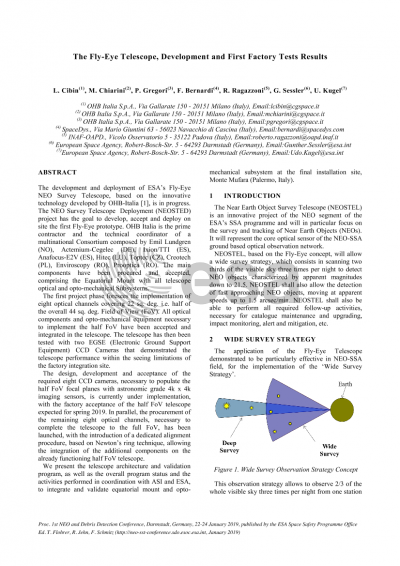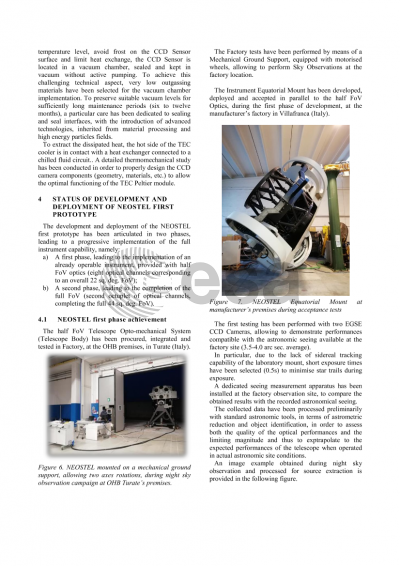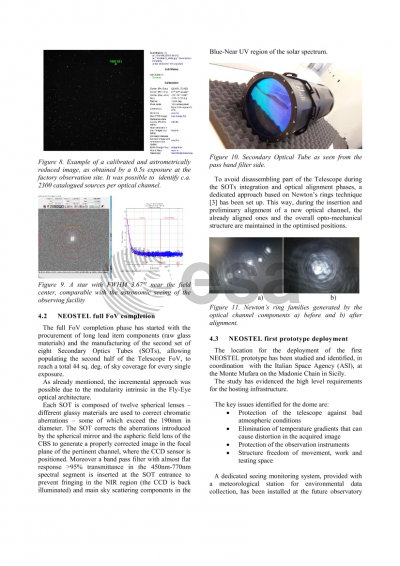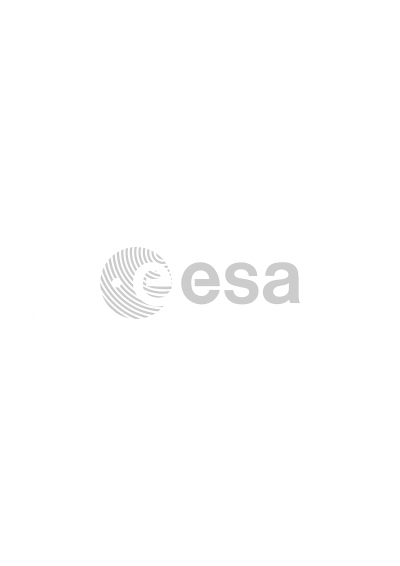Document details

Abstract
The procurement and deployment of ESA’s first NEO Survey Telescope (NEOSTEL), based on the innovative Fly-Eye technology developed by OHB-Italia, is in progress. In particular, the main components have been procured and accepted, comprising the Equatorial Mount with all Telescope Optical and Opto-mechanical Subsystems.
The first project phase foresees the implementation of eight optical channels constituting half (22 sq. deg.) of the overall Field of View (44 sq. deg.). All optical components and opto-mechanical equipment necessary to implement the half FoV have been procured and integrated in the Telescope. The telescope has then been tested with two EGSE CCD Cameras, that demonstrated the telescope performance within the seeing limitations of the Factory integration site.
The design, procurement and acceptance of the required eight CCD cameras, necessary to populate the half FoV focal planes with astronomic grade 4kx4k imaging sensors, is currently under development with the factory acceptance of the half FoV telescope expected for spring 2019.
In parallel, the procurement of the remaining eight optical channels, necessary to complete the telescope to the full FoV, has been launched, allowing fast integration of the additional components on the already functioning half FOV telescope.
We present the telescope architecture and validation program, as well as the overall program status and the activities performed in coordination with ASI and ESA, to integrate and validate equatorial mount and opto-mechanical subsystem at the final installation site, Monte Mufara (Palermo, Italy).
Preview








